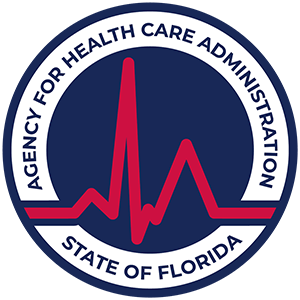Celebrity Overdose Deaths
Unveiling the truth behind celebrity overdose deaths. Explore the factors, prevention, and the opioid crisis.
Understanding Addiction

Addiction can have a profound impact on individuals and society as a whole. It is a complex and chronic condition characterized by the compulsive use of substances despite negative consequences. Understanding the consequences of addiction, including drug overdose deaths, and the factors that contribute to addiction is crucial in addressing this pressing issue.
Impact of Drug Overdose Deaths
Drug overdose deaths have reached alarming levels in recent years. In 2020, there were 93,331 drug overdose deaths recorded, marking the highest number ever recorded [1]. These deaths not only represent the loss of precious lives but also have far-reaching impacts on families, communities, and society as a whole.
The impact of drug overdose deaths goes beyond the immediate loss. It extends to the emotional toll on family members, the strain on healthcare systems, and the economic burden associated with addiction treatment and rehabilitation efforts. Furthermore, drug overdose deaths contribute to the overall public health crisis and underscore the urgent need for effective prevention and treatment strategies.
Factors Contributing to Addiction
Addiction is a multifaceted condition influenced by a variety of factors. Several factors can contribute to the development of addiction, including:
Understanding the factors that contribute to addiction is crucial in developing effective prevention and treatment strategies. By addressing these underlying factors, individuals struggling with addiction can receive the support they need to embark on a path to recovery.
To explore prevention and treatment options, as well as the impact of addiction on the entertainment industry, continue reading the following sections: Prevention and Treatment and Substance Abuse in the Entertainment Industry.
Celebrity Overdose Deaths
The tragic deaths of celebrities due to drug overdoses serve as stark reminders of the devastating impact of addiction. These high-profile cases shed light on the struggles faced by individuals battling substance abuse and the urgent need for effective prevention and treatment measures. In this section, we will explore notable celebrity cases and provide insights into the trends and statistics surrounding celebrity overdose deaths.
Notable Celebrity Cases
Several well-known individuals have lost their lives due to drug overdoses, highlighting the destructive nature of addiction. Some noteworthy cases include:
Trends and Statistics
While celebrity overdose deaths capture public attention, they also reflect broader trends in addiction and substance abuse. Statistics surrounding celebrity overdose deaths provide insight into the prevalence and consequences of addiction. However, it is important to remember that these cases represent a fraction of the larger issue.
It is crucial to recognize that addiction is a complex and multifaceted issue that requires comprehensive approaches to prevention, treatment, and recovery. Celebrity overdose deaths shed light on the urgency of addressing addiction and implementing effective measures to combat the opioid crisis and support individuals struggling with substance abuse.
By raising awareness, promoting education, and advocating for evidence-based interventions, we can work towards reducing addiction-related tragedies and offering support to those in need. Together, we can strive for a society where individuals find the help they need to overcome addiction and lead healthy, fulfilling lives.
Risk Factors and Influences
When it comes to understanding the reasons behind celebrity overdose deaths, it's important to consider the various risk factors and influences that contribute to addiction. Two significant factors that play a role in addiction and substance abuse within the entertainment industry are family history and lifestyle factors.
Family History and Lifestyle Factors
Family history of substance abuse is a significant risk factor for addiction, accounting for about half of one's predisposition to addiction. Individuals with a family history of addiction may have a genetic vulnerability to developing substance abuse issues. It's crucial to recognize the potential impact of family history on an individual's susceptibility to addiction and seek appropriate support and resources.
Lifestyle factors also contribute to the risk of addiction within the entertainment industry. Celebrities often face significant stress, including stage fright and the pressures of show business, which can lead to seeking relief through substance abuse. Peer pressure and competition within the industry can also influence individuals to experiment with drugs or alcohol. Additionally, the frequent exposure to alcohol or drugs, which are commonplace in social settings, can contribute to substance abuse among celebrities [3].
To address these risk factors, it is essential for individuals in the entertainment industry to prioritize their well-being and seek support if needed. This can include therapy, counseling, and participating in addiction recovery programs tailored to their specific needs.
Substance Abuse in the Entertainment Industry

Substance abuse within the entertainment industry is a prevalent issue, and it is influenced by various factors. The glamorization of substance abuse in the industry, combined with significant stressors, has contributed to the high rate of substance abuse among celebrities. In a study of actors who died from drug abuse, it was found that more than half of the celebrities included were from the entertainment industry [4].
The pornographic film industry, in particular, has shown a higher likelihood of drug abuse among male and female porn actors. Among actors who died from drug-related causes, 13.7% were from the pornographic film industry [3]. It is crucial to address the specific challenges faced by individuals in this industry and provide specialized support and resources.
To combat substance abuse in the entertainment industry, education and awareness are key. By highlighting the risks and consequences of addiction, promoting healthy coping mechanisms, and providing resources for treatment, we can encourage a shift towards a healthier and more supportive environment. It is essential to prioritize the well-being of individuals in the industry and provide them with the necessary tools and support to overcome addiction and lead fulfilling lives.
By understanding the risk factors and influences associated with addiction, we can work towards creating a more supportive and compassionate environment for individuals in the entertainment industry and beyond.
Prevention and Treatment
When it comes to addressing addiction and preventing tragic outcomes such as celebrity overdose deaths, early intervention and specialized rehabilitation programs play a crucial role. These approaches focus on providing individuals with the necessary support and resources to overcome addiction and achieve long-term recovery.
Importance of Early Intervention
Early intervention is key to preventing addiction from escalating and leading to devastating consequences. Recognizing the signs of addiction and seeking help at the earliest possible stage can significantly improve outcomes. Family, friends, and healthcare professionals can play a vital role in identifying the warning signs and encouraging individuals to seek treatment.
By intervening early, individuals with addiction have a higher likelihood of successfully breaking free from the cycle of substance abuse. Early intervention strategies may involve counseling, therapy, and education to address the underlying causes of addiction and develop healthy coping mechanisms. It is important to remember that addiction is a treatable condition, and seeking professional help is a crucial step towards recovery.
Specialized Rehabilitation Programs
Specialized rehabilitation programs are designed to provide comprehensive support and treatment tailored to the needs of individuals with addiction. These programs often offer a range of therapies, including individual counseling, group therapy, and behavioral interventions. They may also incorporate holistic approaches such as art therapy, mindfulness practices, and exercise programs to promote overall well-being.
Rehabilitation programs recognize that addiction is a complex condition that requires a multifaceted approach. They provide a safe and supportive environment where individuals can address the psychological, emotional, and physical aspects of addiction. With the guidance of experienced professionals, individuals can develop personalized treatment plans to address their unique needs and challenges.
These programs may also offer additional resources and support, such as aftercare programs, relapse prevention strategies, and connections to community support groups. By combining evidence-based therapies with ongoing support, specialized rehabilitation programs aim to empower individuals with the tools and skills needed for long-term recovery.
It is important to note that recovery is a personal journey, and what works for one individual may not work for another. Therefore, it is essential to explore different options and find a rehabilitation program that aligns with an individual's specific needs and goals. To learn more about addiction recovery tools and resources, visit our article on addiction recovery tools for sobriety.
By emphasizing the importance of early intervention and providing access to specialized rehabilitation programs, we can make significant strides in preventing addiction and reducing the risk of tragic overdose deaths. It is essential to continue raising awareness, promoting education, and advocating for effective public health measures to address the underlying issues contributing to addiction and support individuals on their journey to addiction freedom.
Opioid Crisis
The opioid crisis has had a significant impact on society, leading to a rise in drug overdose deaths. Understanding the factors contributing to this crisis is essential in addressing the issue effectively. In this section, we will explore the rise in prescription drug deaths and the role of heroin and prescription opioids in the opioid crisis.
Rise in Prescription Drug Deaths
In recent years, there has been a concerning increase in drug overdose deaths related to prescription drugs. According to Health.gov, in 2021 alone, there were 32.4 drug overdose deaths per 100,000 population, surpassing the target of 20.7 per 100,000 population. These numbers indicate a critical public health issue that demands attention.
The incidence of deaths caused by prescription drugs in the United States has dramatically increased in the 21st century. Since 2000, the rate of drug overdose deaths involving prescription drugs and prescription opioids has approximately tripled in the U.S. [4]. This rise highlights the urgent need for effective prevention and intervention strategies to combat the devastating consequences of prescription drug abuse.
Role of Heroin and Prescription Opioids

In addition to the rise in prescription drug deaths, the opioid crisis is largely characterized by deaths involving illicitly manufactured synthetic opioids, such as fentanyl, and stimulants. According to the National Center for Health Statistics, drug overdose deaths reached a record high of 93,331 in 2020, with synthetic opioids, excluding methadone, leading the increase at a staggering 103-fold.
Heroin, a highly addictive illicit opioid, also plays a significant role in the opioid crisis. Trends from December 1999 to June 2023 show a 2.5-fold increase in drug overdose deaths involving heroin. The combination of heroin and synthetic opioids has contributed to the alarming rise in overdose deaths across the country.
It's important to note that the opioid crisis is a complex issue influenced by various factors, including the overprescribing of opioids, diversion of prescription drugs for non-medical use, and the availability of illicit opioids in the black market [1]. Addressing the crisis requires a comprehensive approach that focuses on prevention, treatment, and harm reduction strategies.
To combat the opioid crisis effectively, public health measures, such as increasing access to addiction treatment and expanding harm reduction services like safe injection sites, are crucial. Education and awareness initiatives are also vital in informing the public about the risks associated with opioid misuse and promoting responsible prescribing practices.
In conclusion, the opioid crisis has led to a rise in drug overdose deaths, particularly related to prescription drugs, heroin, and synthetic opioids. By implementing comprehensive strategies that address the root causes of addiction, promote treatment, and prioritize harm reduction, we can work towards preventing further tragedy and supporting those affected by addiction.
Addressing the Crisis
In order to tackle the concerning rise in celebrity overdose deaths and the overall drug overdose crisis, it is crucial to implement effective strategies and measures at both the individual and societal levels. Here, we will explore two key approaches: public health measures and education and awareness.
Public Health Measures
Public health measures play a vital role in addressing the drug overdose crisis and preventing further loss of lives. These measures focus on various aspects, including harm reduction, access to treatment, and safe injection sites. Some of the key public health measures that have shown promise include:
Education and Awareness
Education and awareness play a crucial role in preventing drug overdose deaths and promoting healthier choices. By providing accurate and evidence-based information, individuals can make informed decisions about substance use and seek help when needed. Some key aspects of education and awareness initiatives include:
By implementing comprehensive public health measures and prioritizing education and awareness, it is possible to make significant progress in addressing the drug overdose crisis. Continued efforts in these areas are crucial to saving lives, supporting individuals on their path to recovery, and creating a society that is better equipped to prevent and address addiction-related challenges.
References
[2]:
[3]:
[4]:














.svg)








